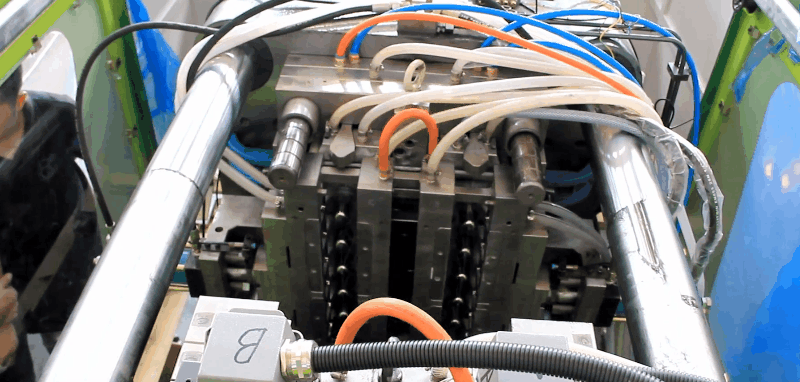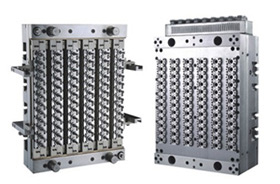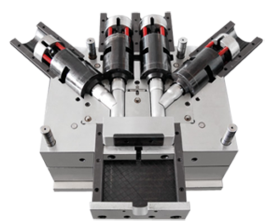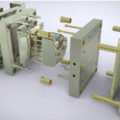The plastic product recycling symbol was formulated in 1988 by the Society of the Plastics Industry (now renamed Plastics Industry Association). This set of logos stamps plastic material identification codes on containers or packaging materials, plastic recycling numbers 1 to 7, so that people can simply join the ranks of recycling without having much work to learn the similarities and differences of various plastic materials. Every plastic container has a plastic recycling symbol, usually at the bottom of the plastic containers. Each number represents a kind of plastic container. They are made of different materials, and there are also different contraindications. The recycling mark is also a health certificate The plastic recycling symbol is a triangle symbol, usually at the bottom of the plastic container. There are numbers from 1 to 7 in the triangle. Each number represents a different material. Therefore, the different numbers in the recycling mark indicate which resin the product is made of. If the product is made of several different materials, What is marked is the main and basic materials of the product. Remember,
Read more →Key Technologies for PET Preform Injection Molding The chemical name of PET is polyethylene terephthalate, also known as polyester. At present, GF-PET is the most used by customers, mainly for bottle preforms. PET has better rheology in the molten state, and the pressure has a greater effect on viscosity than temperature. Therefore, We mostly adjust the injection pressure to change the fluidity of the melted PET material. 1. Processing of PET Material before Injection Molding Because PET macromolecules contain fat bases and have certain hydrophilicity, pellets are more sensitive to water at high temperatures. When the moisture content exceeds the limit, the molecular weight of PET decreases during processing, and the product becomes colored and brittle. Because of this, the materials must be dried before processing. The drying temperature is 150°C for more than 4 hours, generally 170°C for 3-4 hours. The air shot method can be used to check whether the material is completely dry. The proportion of recycled materials should generally not exceed 20%, and the recycled materials must be thoroughly dried. 2. How to Selection a Right
Read more →There are thousands of plastic injection mold makers in China today. It makes lots of people confused about how to choose a plastic mold maker correctly or to pick up the right mold supplier for your project. Here are some guidelines you should know to help you out with the problem. 1st of all, we must know our requirements for the exact product for the project. Then we can sort out how to choose a right mold maker to manufacture our mold. Here we simply list the key points for different grand mold manufacturers as below: 1. Top Grand Injection Mold Manufacturers: A professional injection mold manufacturer has an experienced team for mold design, manufacturing, quality control, inspection, and many top machines in the industry. Including but no only: high-speed CNC lathes, CNC milling machine, CNC machining centers, mirror spark machines, slow-moving wire, precision grinders, high precision injection molding machines, two-dimensional, three-dimensional testing equipment, etc. It is suitable for molds with complete surface treatment, perfect interface, flawless product assembly, reasonable and standardized internal structure, and mold tolerance of about 0.02mm.
Read more →Key Technologies for PET Preform Injection Molding The chemical name of PET is polyethylene terephthalate, also known as polyester. At present, GF-PET is the most used by customers, mainly for bottle preforms. PET has better rheology in the molten state, and the pressure has a greater effect on viscosity than temperature. Therefore, We mostly adjust the injection pressure to change the fluidity of the melted PET material. 1. Processing of PET Material before Injection Molding Because PET macromolecules contain fat bases and have certain hydrophilicity, pellets are more sensitive to water at high temperatures. When the moisture content exceeds the limit, the molecular weight of PET decreases during processing, and the product becomes colored and brittle. Because of this, the materials must be dried before processing. The drying temperature is 150°C for more than 4 hours, generally 170°C for 3-4 hours. The air shot method can be used to check whether the material is completely dry. The proportion of recycled materials should generally not exceed 20%, and the recycled materials must be thoroughly dried. 2. How to Selection a Right
Read more →The PET preforms most used of PCO neck finish ( PCO = Plastic Closure Only ) are two types: PCO 1881 neck finish and PCO 1810 bottle neck finish. At the beginning of November 2006, the ISBT (International Society of Beverage Technologists) agreed on a new lightweight standard for 28mm preform neck finish called PCO 1881, which provides a weight saving of 1,3 g (26%) compared to current type bottle neck PCO 28 (3.74 g vs. 5.05 g) and of 2,5 g (40%) compared to BPF neck finish. In particular, it includes good venting capability due to sufficient thread length (650° thread travel, extendable to 680°) and adequate positioning of vertical slots across the threads; and efficient closure tamper-evident (TE) band functioning due to special TE bead profile. The SuperShorty PCO 1881 bottle neck is a 28-mm closure designed for a short-height PET preform neck finish. The biggest difference between PCO 1881 & PCO 1810 is the height of them. PCO 1881 is the with the height 17mm while PCO 1810 has 21mm. The neck finish PCO 1881 is about
Read more →The clamping force calculation of the injection molding machine is a compulsory course for all the injection molding engineers. Let’s talk about the calculation method of the clamping force in injection molding. The clamping force of the injection molding machine, also known as the clamping force, is the key to the molding of injection products. If the clamping force is too small, it will cause the product to have flash or lack of material. Too big clamping force will result in a waste resource and will cause premature aging of hydraulic components and mechanical structure wear. There and many injection molding machine tonnage calculation formulae. Below we will explain how to calculate clamping force with 4 clamping force formula one by one. Empirical formula: the core idea-to calculate the clamping force through the clamping force constant Calculation formula: clamping force = clamping force constant x projected area of the product p=kps Remarks: p=clamping force (t); kp=clamping force constant (t/cm2), s=projected area of the product on the template (cm2). There are 4 clamping force calculation formulae to calculate the clamping force
Read more →Injection molding cycle time calculation is one of the most important works for an injection molding engineer. Injection molding is a cyclic process. In order to calculate the cycle time, you should calculate operating cycle time for all the molding machine`s movement. The whole operating cycle time includes injection time/filling time, Pressurized Holding Time, Polymer Melting/Charging Time, Cooling Tim, Machines basic movement(Mold open & close) operating Time, Ejection, Drop, Robot Time, etc. Total injection molding production cycle time calculation formula: T=Ti + Tp + +Ts + Tm + Tc + To +Te
Read more →Plastic Mold Polishing Techniques is very important for plastic molds manufacturing. It affect a lot on the plastic molds` quality. It helps to get a beautiful surface and makes ejection smooth. Mold polishing generally uses oil stone, sandpaper, polishing paste, etc. to grind the cavity surface of the mold, so that the working surface of the mold can be as bright as a mirror. It is called mold polishing. Mold polishing has two purposes; one is to increase the finish of the mold, so that the surface of the product from the mold is smooth, beautiful, and beautiful, and the other is to make the mold easily demolded, so that the plastic is not stuck on the mold and cannot be taken off . Polishing is a very important process in the mold making process. With the increasingly widespread use of plastic products, the appearance quality of plastic products is also getting higher and higher. Therefore, the surface polishing quality of plastic mold cavity should be improved accordingly, specially Mirrors and high-gloss high-gloss surfaces require higher mold surface roughness and
Read more →Difference between Extrusion Blow Molding and Injection Blow Molding Extrusion blow molding and injection blow molding is widly used to produce hollow products with small and big size. Most engineers and manufacturers in plastic industry may know very well for the difference between extrusion blow molding and injection blow molding. They can check very fast for a bottle or product how it is made or how to produce the kind of plastic containers or products.But as a layman,most people may be confused for how a product is made. Here we will talk about how the find out the differece of the extrusion blow molding process and injection blow molding process. Extrusion Blow Molding Process Extrusion blow molding process is start from the material is melted and plasticized in the barrel. And then extruded from the head of the extruder with conventional downward tube.When the hube parison reaches a predetermined length, a section of tube embryo is intercepted and placed in the blow mold while still hot. The mould is closed catching and holding the neck end open and pinching the
Read more →Difference Between Three-plate Mold and Two-plate Mold The three-plate mold refers to a set of mold blanks consisting of A plate, B plate, and nozzle stripping plate; the two-plate mold batch is composed of A plate and B plate. The difference between the three-plate mold and the two-plate mold is that there is a nozzle stripper. From the perspective of mold structure, the guide posts of the three-plate mold are in the front mold, and the guide posts of the two-plate mold are in the rear mold. From the point of view of use, products with a glue inlet (fine nozzle) feeding method use a three-plate mold; while plastic products with a large nozzle feeding method use a two-plate mold. Three-plate mold structure description: The spout edge nail cooperates with the guide sleeve, and then the front mold is guided (the straightening spout plate panel A plate). Secondly, the spout edge nail is not added with a guide sleeve on the entire rear mold, and the template is avoided. Therefore, the spout nail only guides the front mold, while the
Read more →Plastic Blow Moulding Process There are different plastic blow moulding process to make a bottle. But what kind of technology should be chosen depends on the characteristics required. What are the exactly molding process? Here we will explain more details about them and their characteristics and comparison. Plastic Injection Blow Molding Process Injection blow moulding process can be separated as injection moulding process and blow moulding process. 1. Injection moulding process: The injection molding is finished by an injection molding unit or machine. In this process we will produce a semi-finished product called preform or parison. Raw material is melt in a barrel and feed to the nozzles, injected to a injection mold, then we have the perform with kinds of bottle neck types. 2. Blow Moulding process: The blow molding is we put the performs or prisons to a blowing mold and use high pressure air to blow it up as a bottles or other hollowed containers. The injection blow moulding process is known as two steps injection blow molding and one step injection blow molding. Preforms whether cooled
Read more →Injection Stretch Blow Moulding Process Injection stretch blow moulding process is best known for manufacturing high quality and high clarity products. Exactly it`s PET water bottles. And of caused some other products are using the same molding process, like baby feeding bottles, outdoor drinking water bottles,cosmetic bottles,etc. The injection stretch blow molding process includes below 2 process: 1. Injection molding process: The raw material is heat and melt with a screw and barrel,and then injection to a preform injection mold. 2. Stretch and blow molding process: The preform is transferred to a blow mold before it`s cooled or reheated to the glass transition temperature for stretching, Then it was stretched in axial direction with a stretch rod, then release compressed air into the preform to force against the inside of the blowing mold, when it was cooled we have the mold shape products. Some people may be confused with the injection blow molding process and injection stretch blow molding process. Just noted there is only one different thing: stretching process. Injection stretch blow molding means the preforms must be stretched
Read more →






